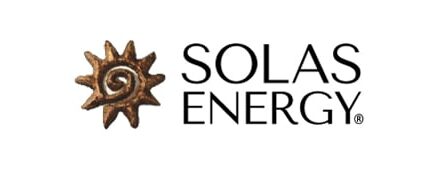Lessons from the Past: Transporting Ammonia by Rail and Ship in Ireland
By Paula McGarrigle, President and CEO, Solas Energy
As the global energy transition accelerates, ammonia is re-emerging—not only as a cornerstone of fertilizer production, but as a clean hydrogen carrier and zero-carbon marine fuel. While the technologies and markets are evolving, Ireland’s historical experience with transporting ammonia offers valuable lessons that remain strikingly relevant today.
This is also a personal story for me. I grew up in Arklow, County Wicklow, Ireland, a town shaped by its industrial roots, and my father, Aidan McGarrigle, was directly involved in this pivotal transition. He worked at Nitrigin Éireann Teoranta (NET) during a time of major operational and logistical change, when Ireland was rethinking how it produced and moved critical industrial materials like ammonia. Recently, in reviewing his notebooks, I came across his 1973 calculations of the economics associated with the transportation of ammonia by rail and sea.
Centralizing Production at Marino Point
Until 1978, NET operated an oil-fueled ammonia plant at Arklow. However, with the global oil crisis driving up costs, the plant became economically unviable. The solution was bold and forward-thinking: develop a new, gas-based ammonia and urea complex at Marino Point near Cork Harbour, powered by natural gas from the Kinsale Head field.
The strategy was transformative:
– Shut down ammonia production in Arklow
– Produce ammonia centrally at Marino Point, in County Cork, Ireland
– Transport ammonia by rail to Arklow for further processing
– Ship ammonia by sea to other facilities like Irish Fertiliser Industries (IFI) in Belfast
This pivot marked a significant shift in Ireland’s approach to industrial logistics—one that required coordination across energy, transportation, and infrastructure sectors.
How Ammonia Was Transported
By Rail: Cork to Arklow
After 1979, ammonia was transported from Marino Point to Shelton Abbey in Arklow, using dedicated anhydrous ammonia tank wagons. These trains became a regular fixture, representing a new era in safe, large-scale inland chemical transport. Each train carried six to nine pressurized ammonia tank wagons. These were dedicated freight services, not mixed goods trains. The trains operated under strict safety protocols, with barrier wagons placed at both ends of the ammonia tank cars. Two to three trains were run per week, running early in the week, thereby allowing ammonia to be offloaded and processed into nitric acid and fertilizers throughout the week. Storage tanks at Arklow allowed buffering between deliveries.
By Tanker Ship: Coastal Shipping to Belfast
Marino Point also served as a marine terminal, allowing ammonia to be shipped by coastal tankers to Belfast and other industrial sites. This was an efficient solution for long-distance distribution and international connectivity. One coastal tanker shipment was sent every one to two weeks to IFI’s fertilizer plant in Belfast. This depended on storage capacity at the receiving port, weather, and sea conditions. Marino Point had a dedicated ammonia storage tank farm, marine loading arms, and jetty infrastructure, with safety buffer zones and monitoring systems for dangerous goods. The specialized coastal tankers carried anhydrous ammonia under pressure and at low temperature and typically loaded 1,000 to 3,000 tonnes per voyage, depending on vessel size and receiver tank capacity. Ammonia was offloaded into pressurized storage tanks.
This endeavour required high safety standards for all loading/unloading operations due to ammonia’s toxicity and volatility. Port personnel underwent specialized training. The port had gas monitoring and emergency containment systems. Marine traffic was coordinated to avoid conflicts with general cargo. Operational challenges included weather sensitivity, which could delay shipments or force vessels to wait offshore for safe docking. Only select terminals were equipped to handle bulk ammonia, so this limited port flexibility.
Lessons Learned
From Rail Transport
– Reliable inland delivery
– Lower emissions and efficient scheduling
– Safety dependent on purpose-built equipment and trained staff
– Infrastructure-intensive
– Limited to areas served by rail
From Marine Transport
– Cost-effective for high volumes
– Compatible with global supply chains
– Scalable for future export of green ammonia
– Demanded port specialization and hazard controls
– Vulnerable to weather and maritime delays
Why This Matters Today
Today, ammonia is gaining renewed attention as a zero-carbon fuel and hydrogen carrier. As countries and companies plan for a net-zero future, the logistics and infrastructure needed to move ammonia safely and efficiently are once again front and centre.
Ireland’s experience shows us:
– Intermodal logistics work, with strong planning and investment
– Centralized production hubs and robust transportation systems improve efficiency and reliability
– A culture of safety and innovation is essential when handling complex, hazardous materials
This story not just as a piece of industrial history, but a reminder of how adaptability, ingenuity, and public investment can shape the future. From fertilizer to fuel, ammonia is on the move again. And we would do well to remember where we’ve been as we chart where we’re going. If you’re exploring hydrogen or ammonia logistics, infrastructure design, or intermodal strategies, contact me at pmcgarrigle@solasenergy.com to learn more.
#Hydrogen #Ammonia #CleanFuels #RailLogistics #MaritimeLogistics #EnergyTransition #Infrastructure #NET #Ireland #Decarbonization #IndustrialStrategy
